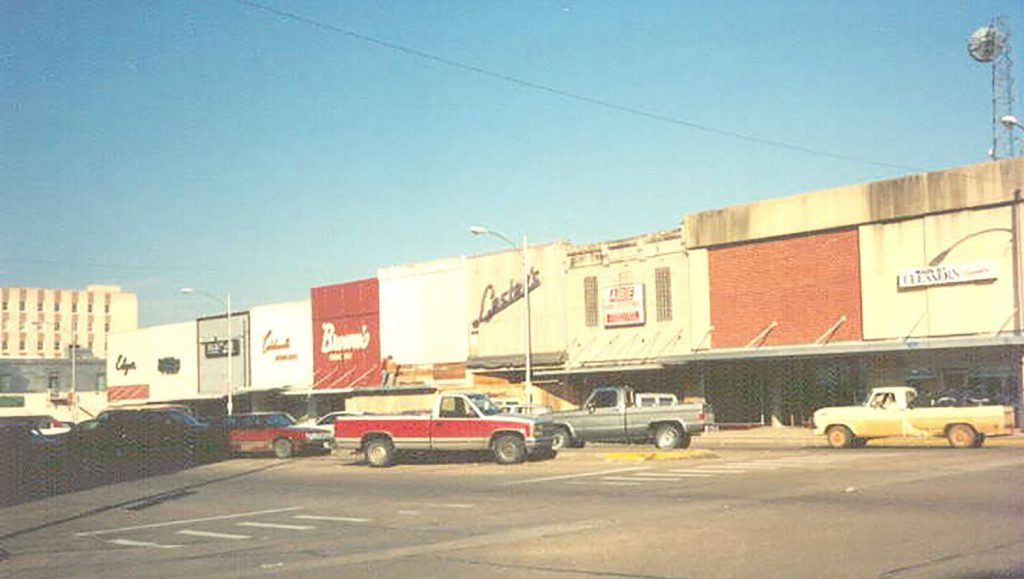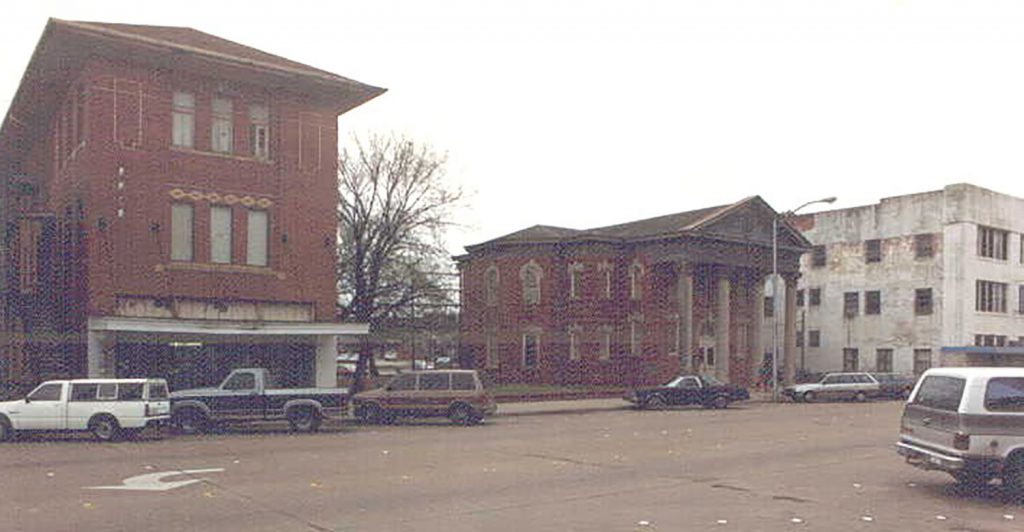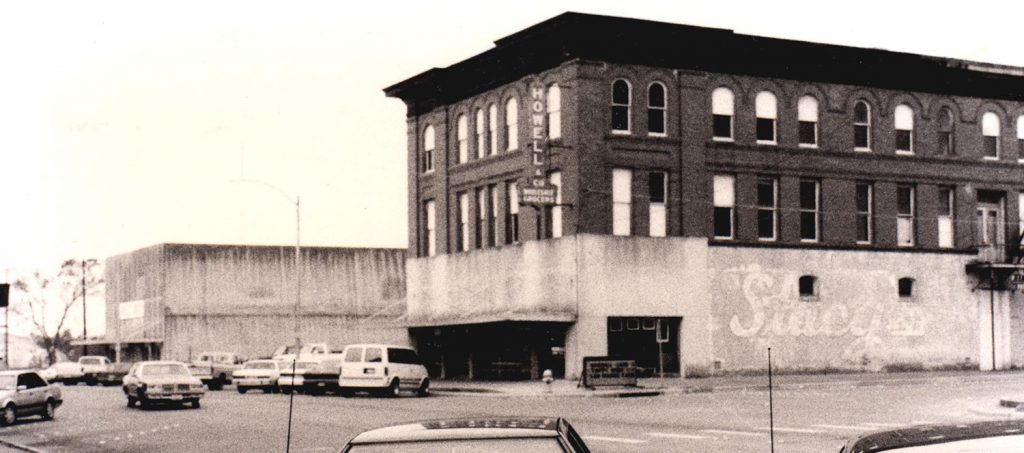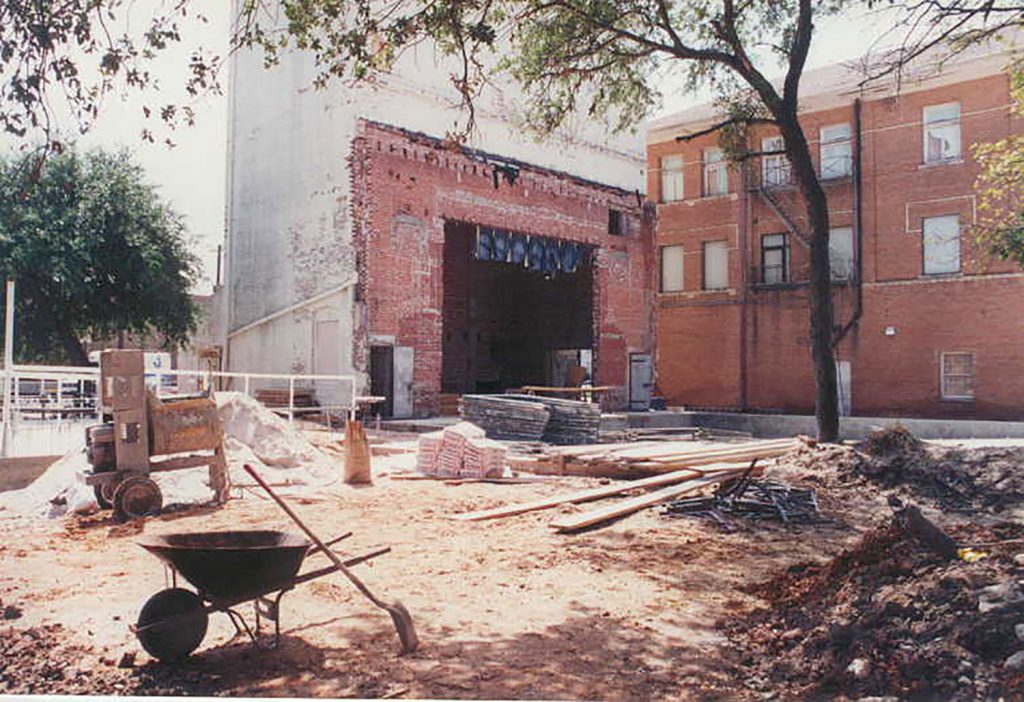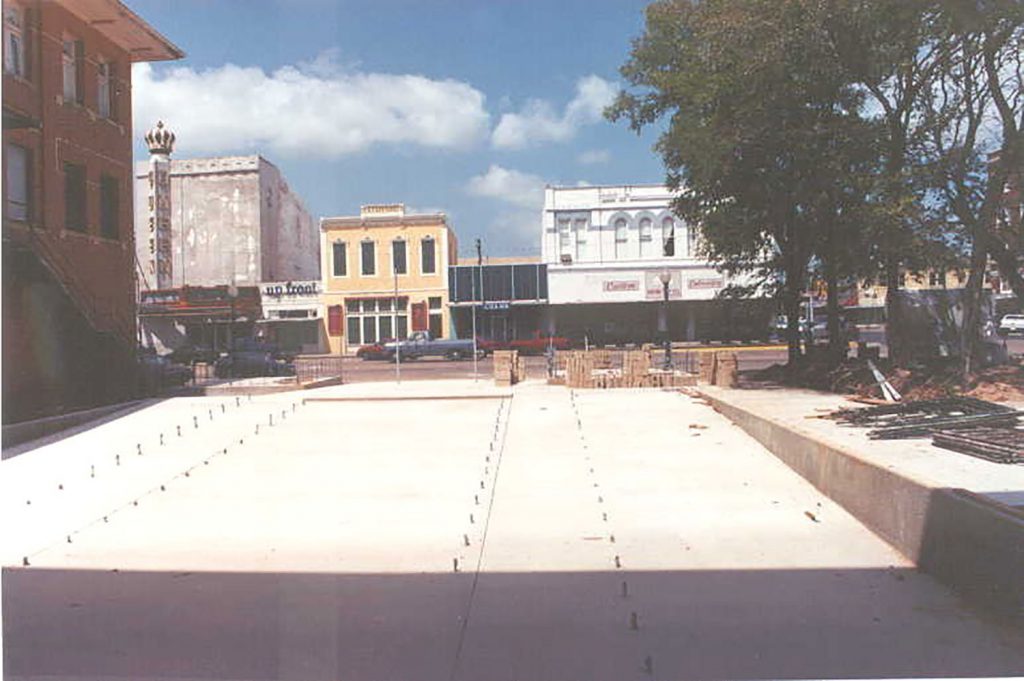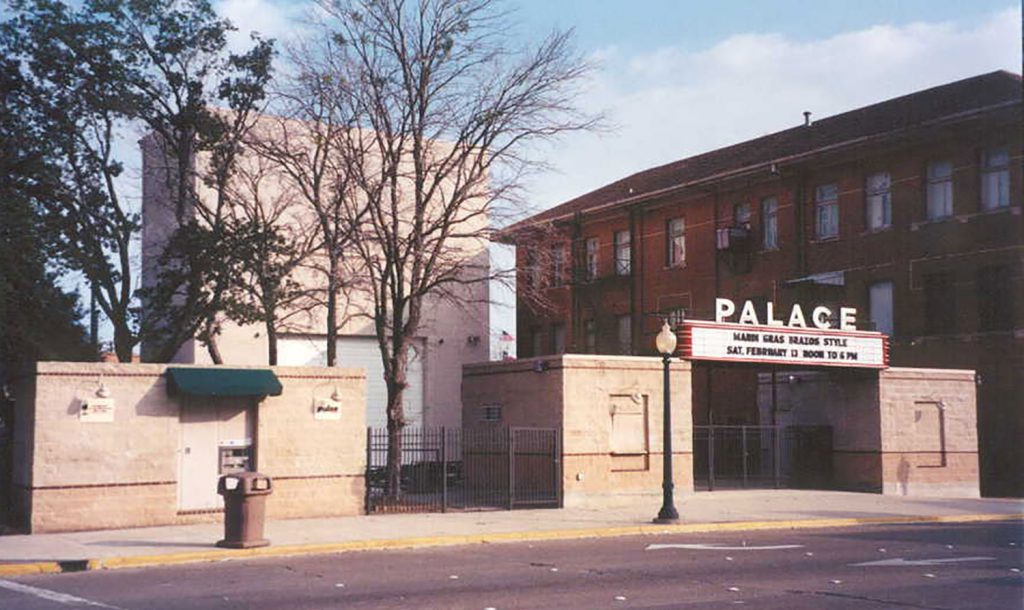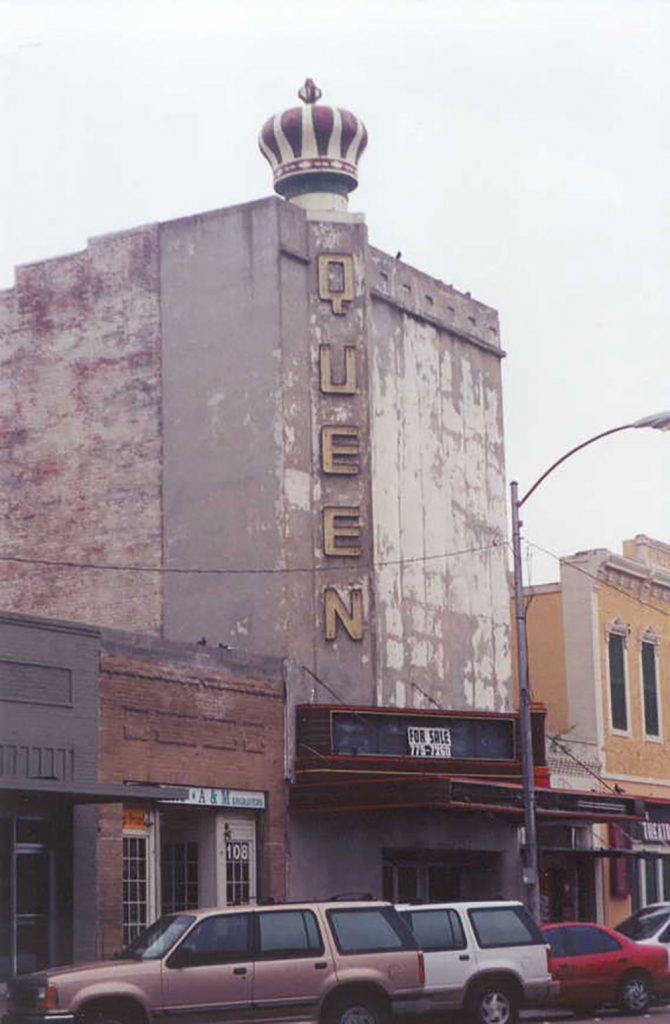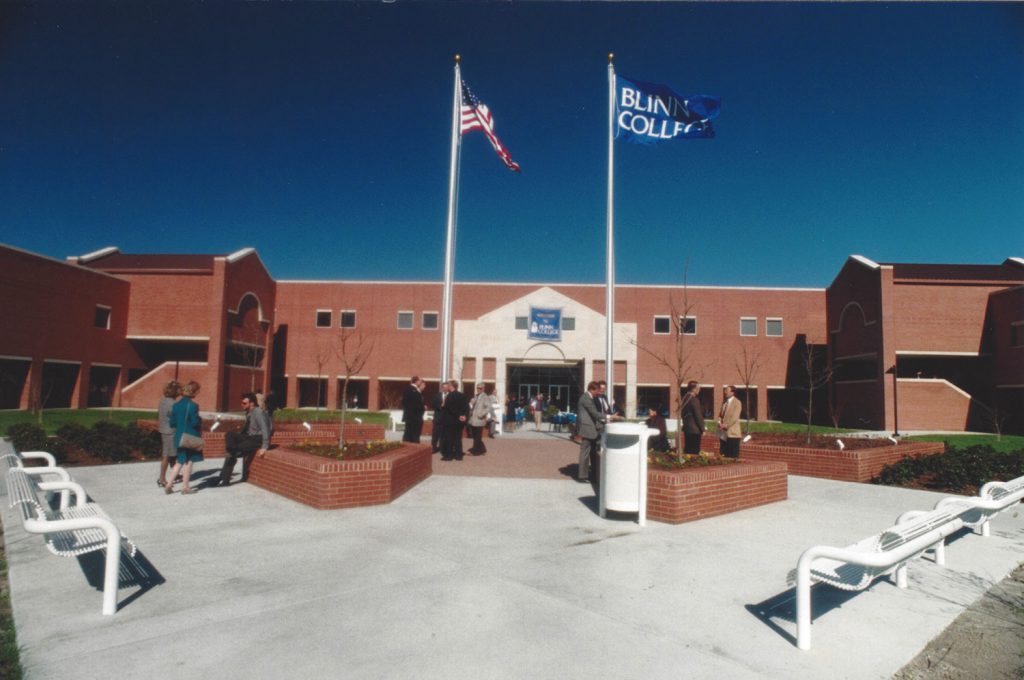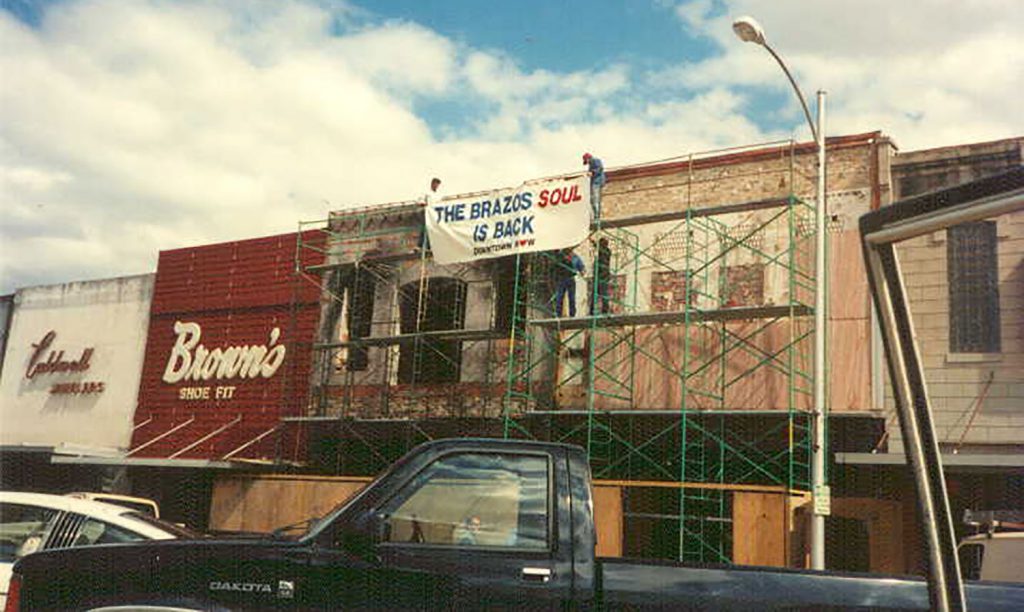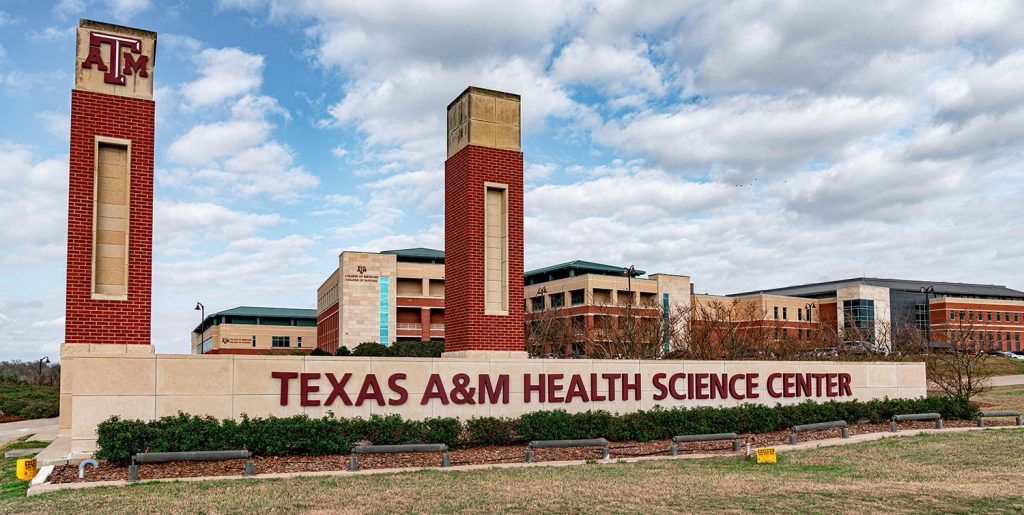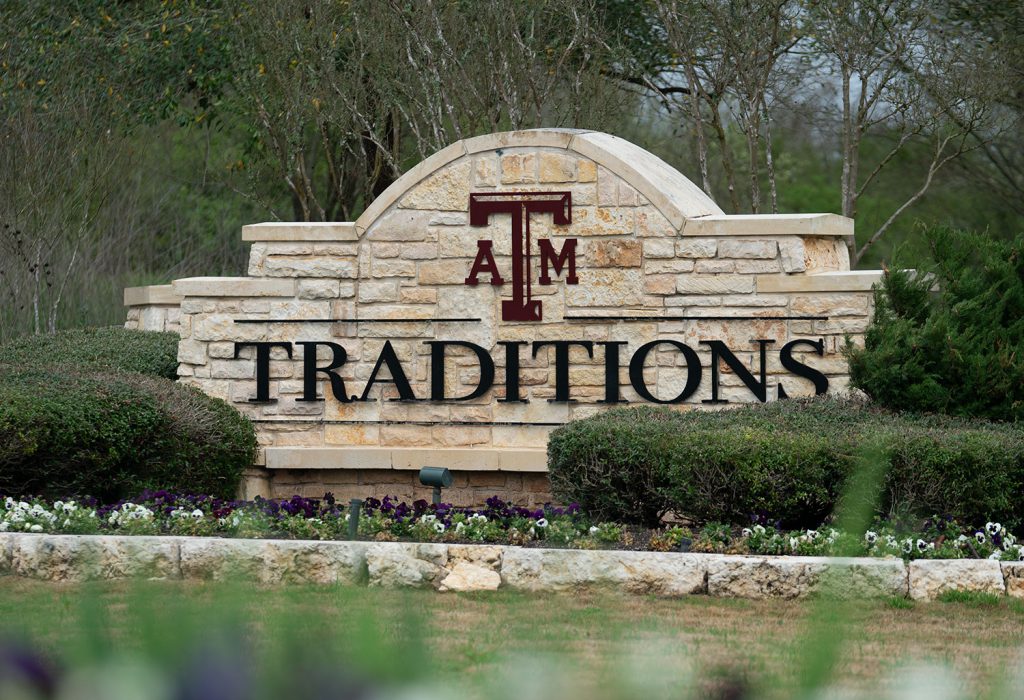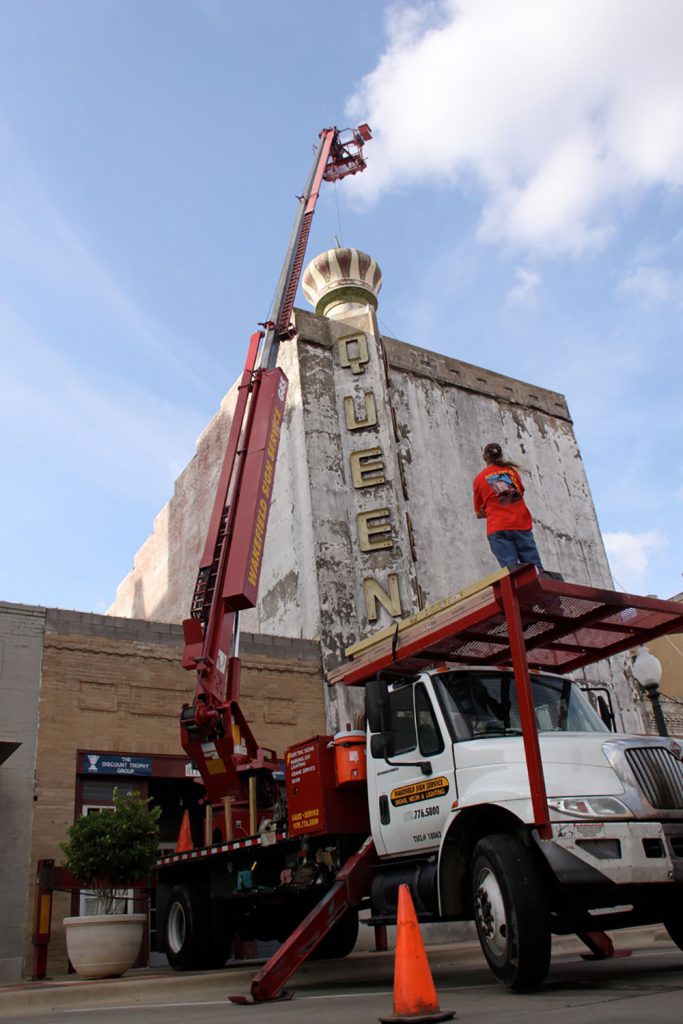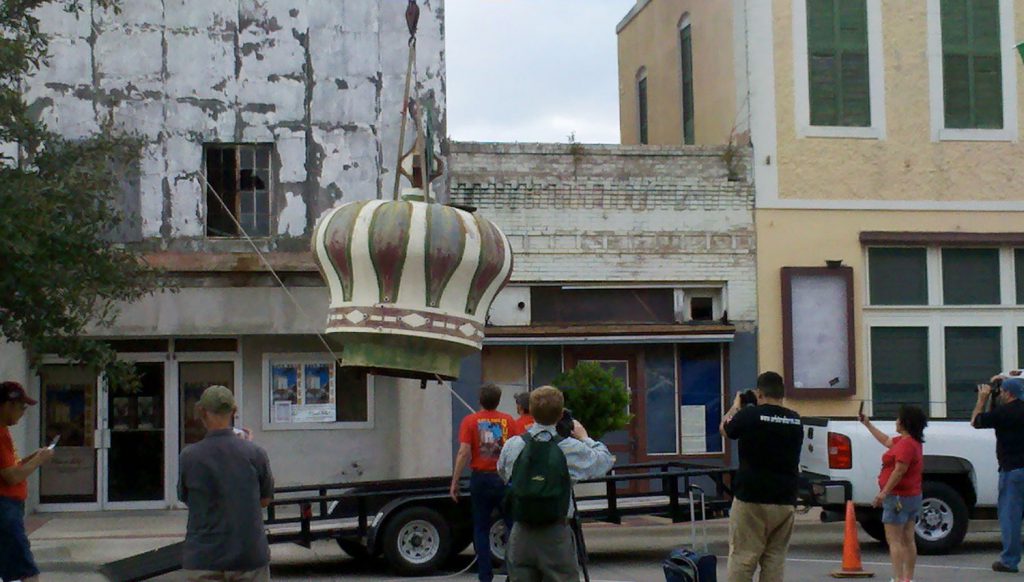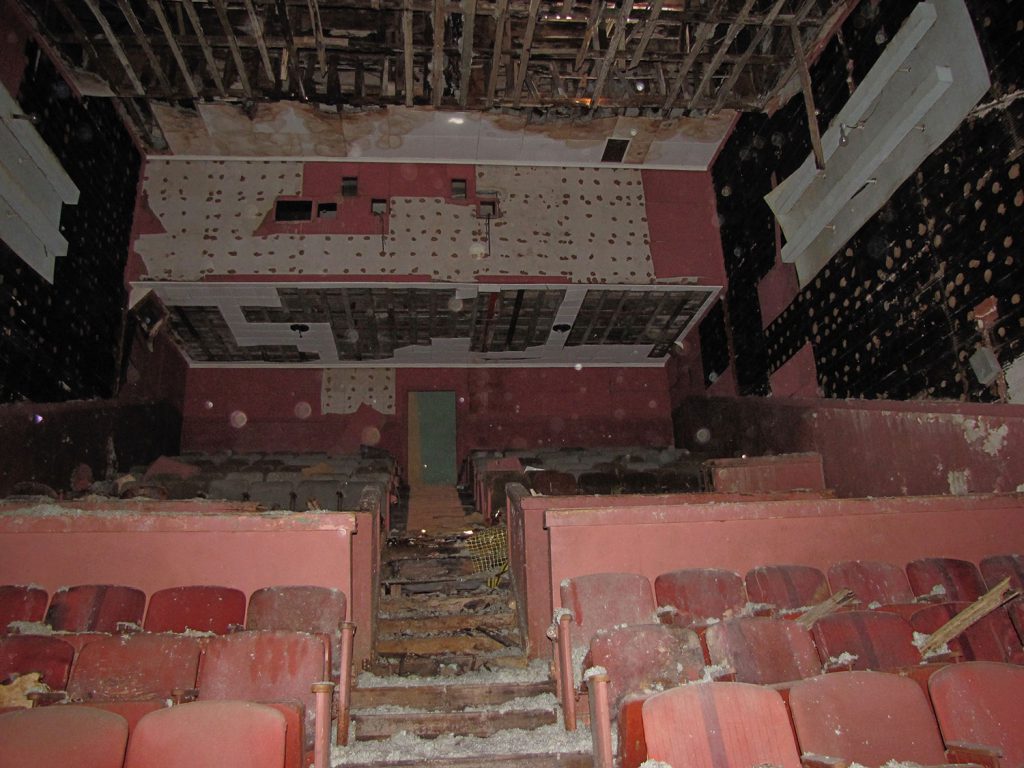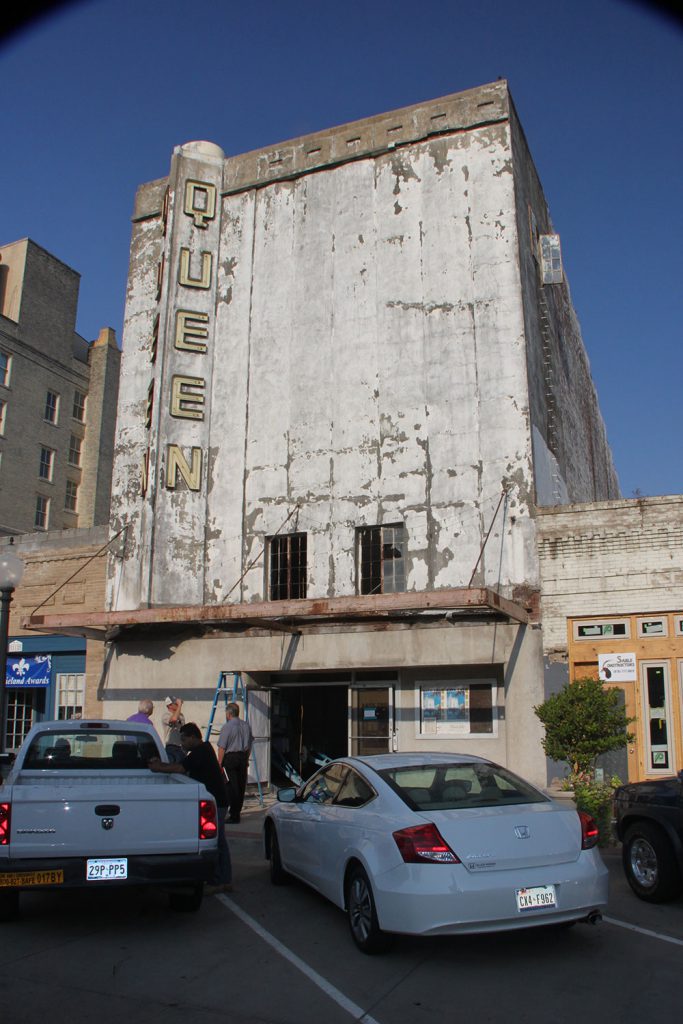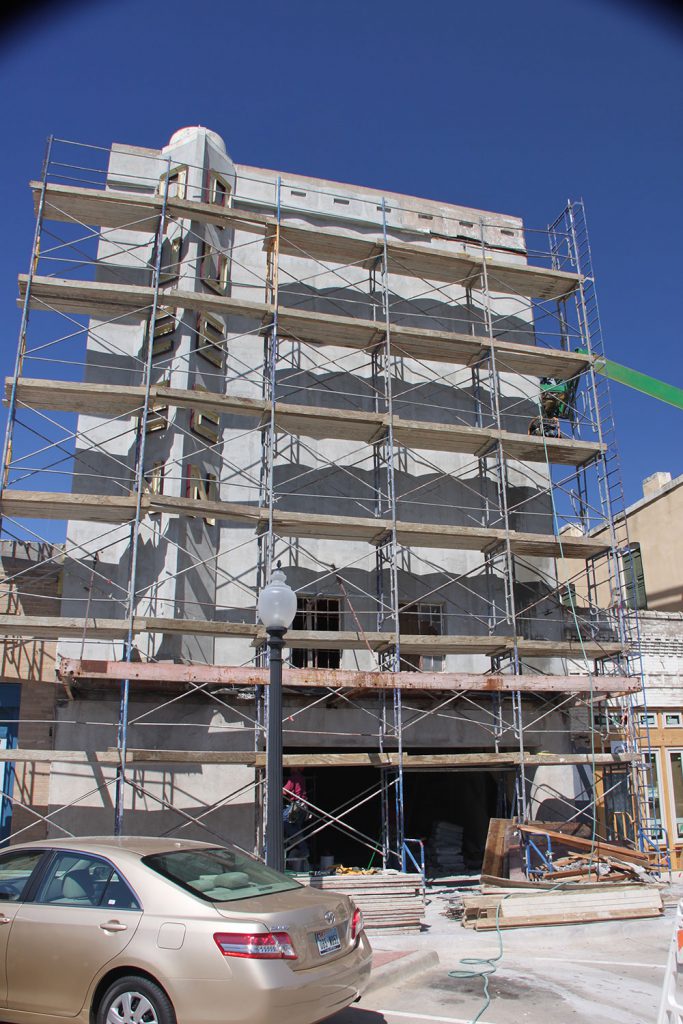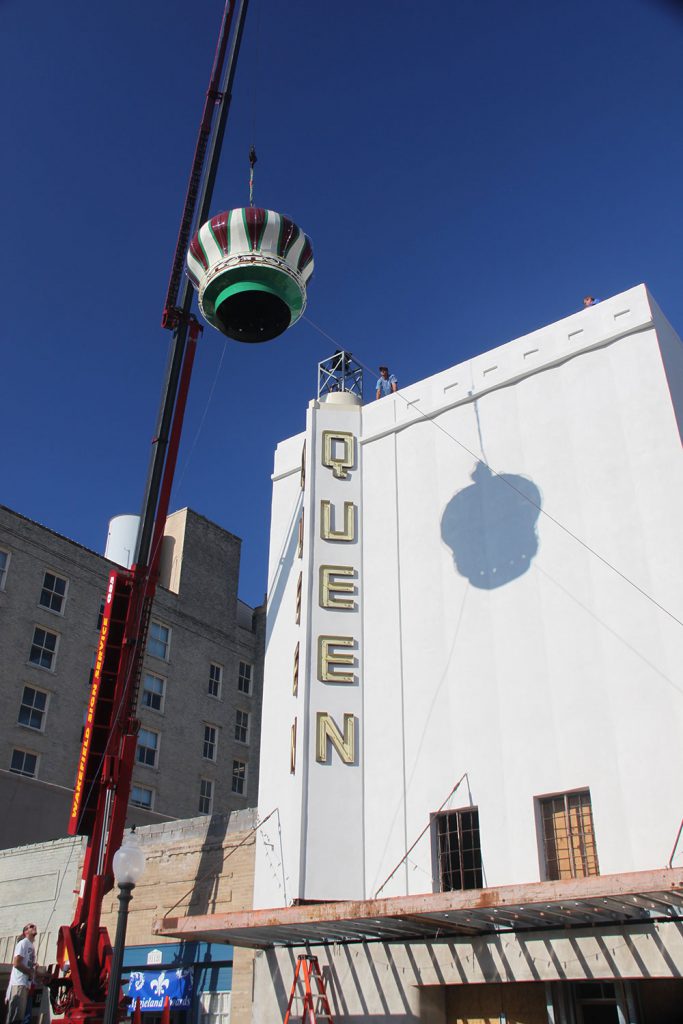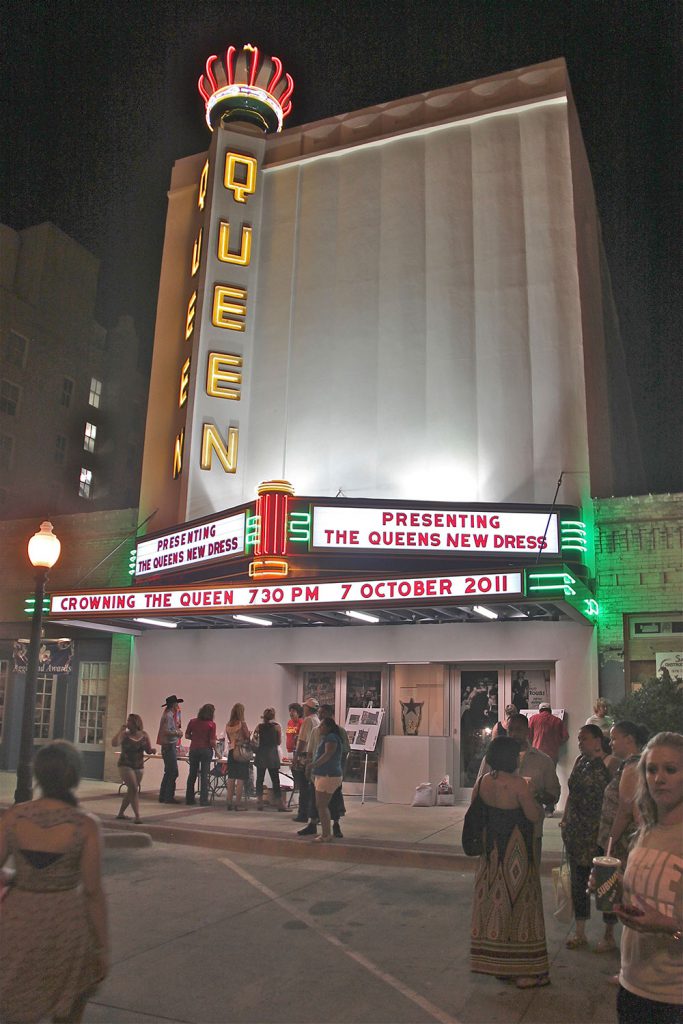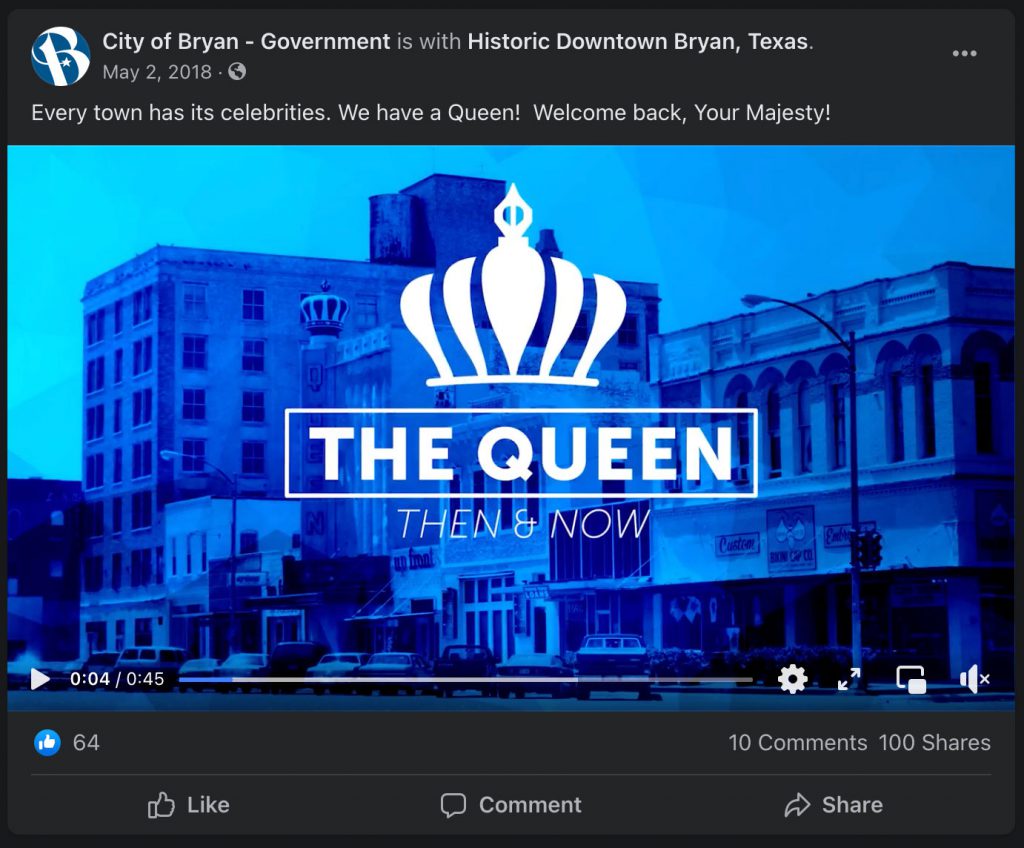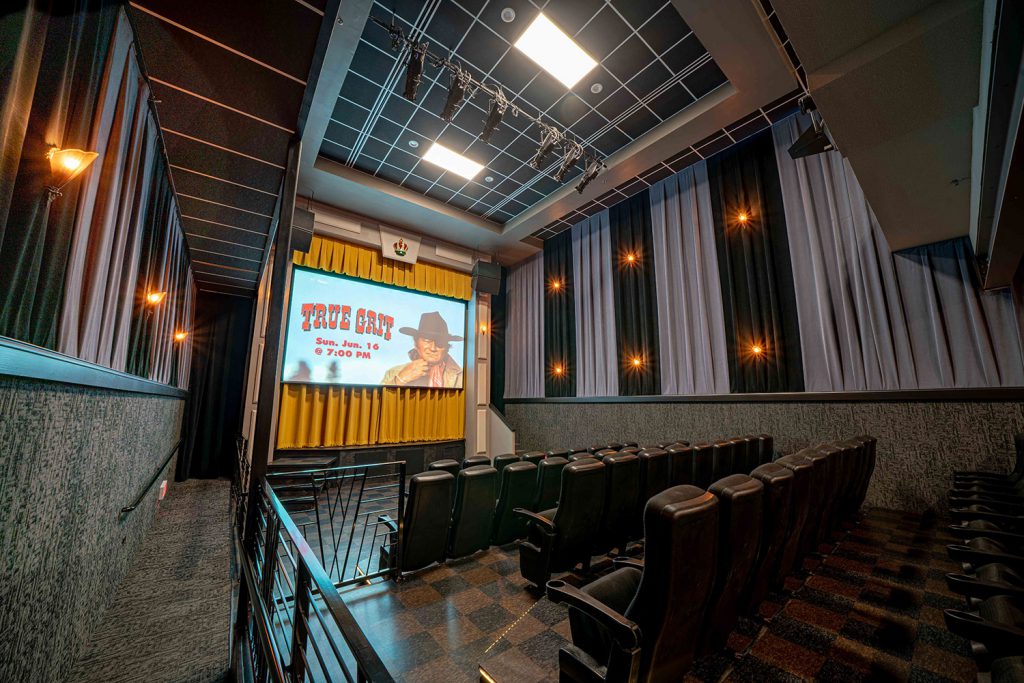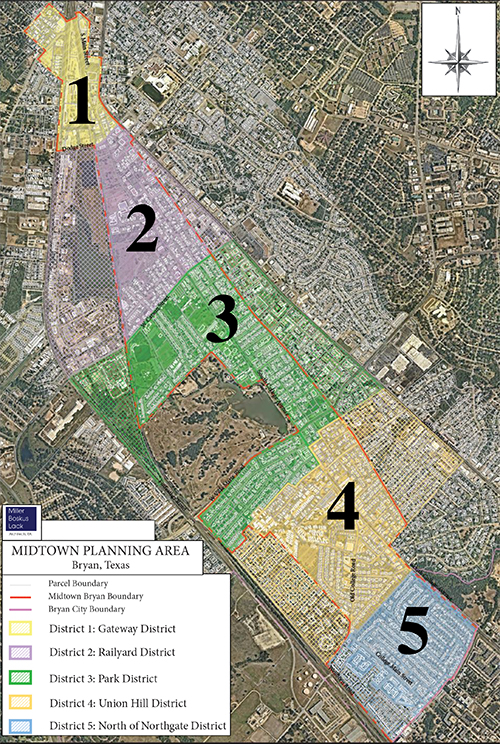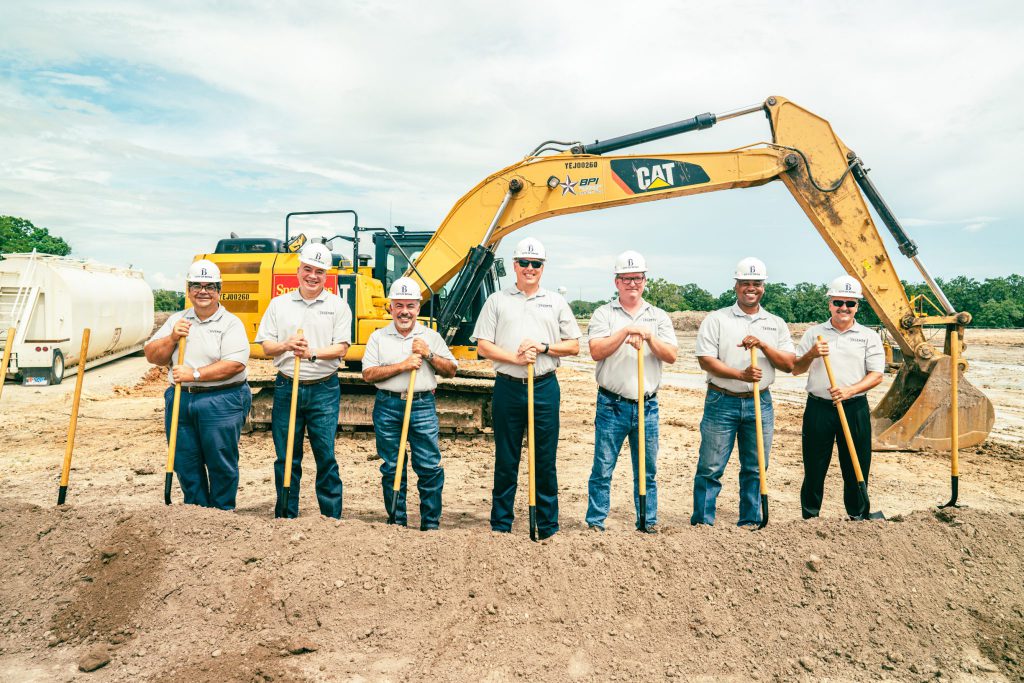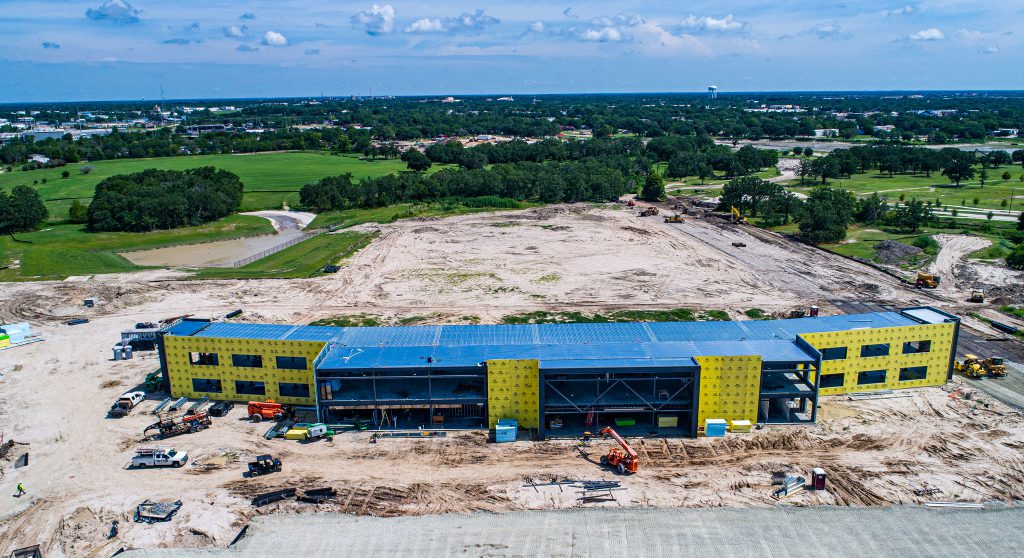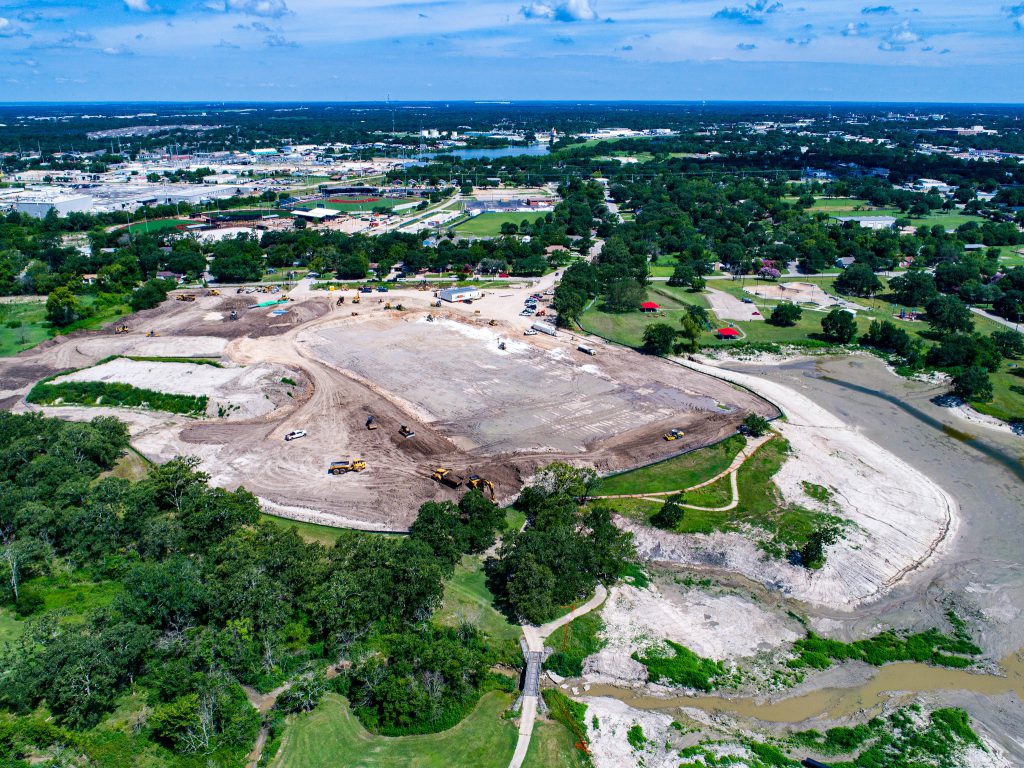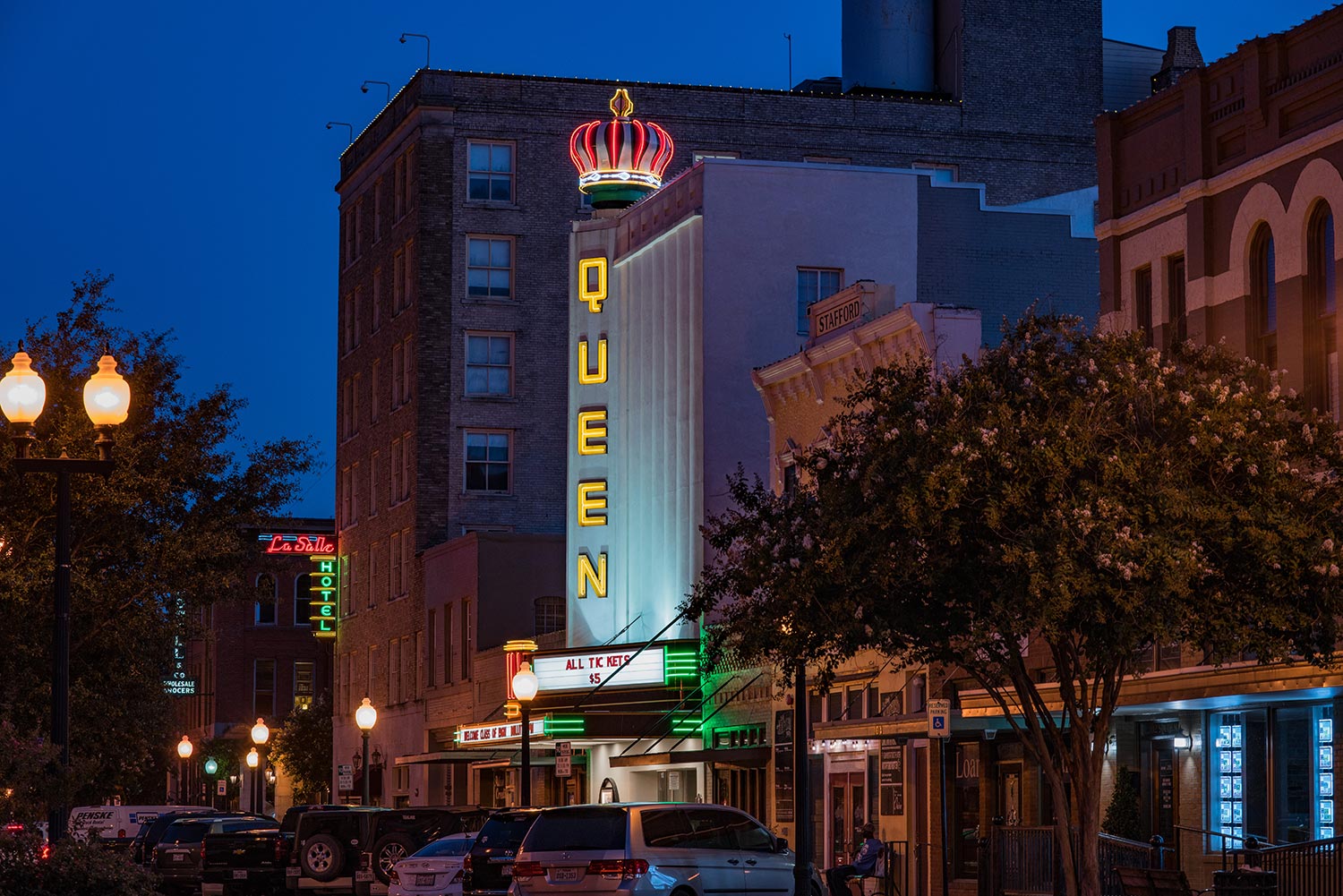
Revival, RELLIS
and the Road Ahead
1991-Today
As the saying goes, “It’s always darkest before the dawn.” That could not have been more true for Downtown Bryan in 1991. The Palace was in ruins, The Queen was falling apart, and the rest of the historic buildings in downtown weren’t faring much better. It would take a herculean effort to right this ship. Volunteer organizations wouldn’t be able to do it on their own. They needed support that only a governmental entity can provide. And the City of Bryan stepped up to the plate and swung for the fences.
Early 1990s: A downtown that needs saving
Good intentions aren’t always enough
As we mentioned in the previous chapter, Lyle Lovett’s video for “This Old Porch,” and the associated documentary for VH1, “Trucks, Tortillas and Tombstones,” highlighted the hard times that had fallen on Downtown Bryan.
After years of volunteer work by Downtown Now to clear debris from The Palace, it became clear that the resources required to fix these issues couldn’t be raised by a smaller nonprofit organization. We also must remember that this was the late 1980s and early 1990s, hardly the best of economic times in Texas. The oil bust in the 1980s and the recession of the early 1990s meant money was tight. There was only one entity that was able to take on this project at that time.
And so, in 1991 the City of Bryan reclaimed ownership of The Palace and incorporated Downtown Now into the city itself. This gave the cleanup and restoration effort the boost that it needed. Within a short amount of time, the revamp was well underway. It required knocking down the remaining front of The Palace for structural reasons, but the marquee was saved for use in the new concrete entrance to the open-air theater facility.
1992: Bryan becomes a Texas Main Street City and receives design and technical assistance from the Texas Historical Commission.
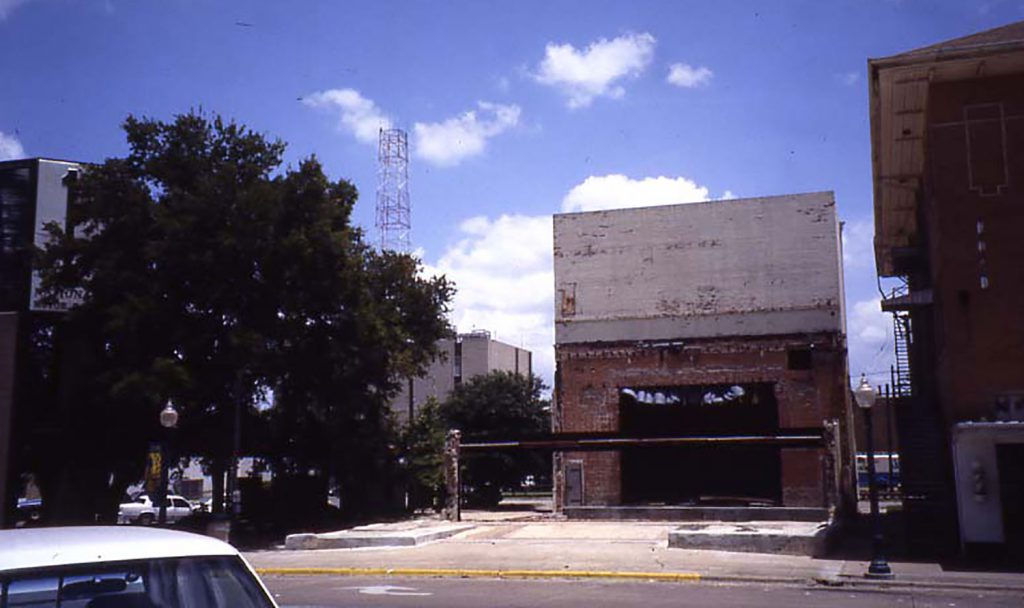
From indoor to outdoor venue: When The Palace’s roof and side walls collapsed in 1986, the cost to rebuild the enclosed structure was just too great to overcome. In the early 1990s, the City of Bryan renovated the facility, tearing down the existing front wall and pouring new concrete foundations for the stage and seating area. And so the site became an outdoor event space.
One theater project down, one to go. But the next one wouldn’t be resolved for a long time yet.
In 1991, The Queen was donated by Al and Bill Schulman to Brazos Beautiful Inc., a nonprofit corporation, for “the respect and affection which we have for the citizens of Bryan and for the betterment of the downtown district.” Four days later, the property was transferred to Bryan Downtown Revitalization Inc., yet another nonprofit.
Later that year, it was deeded to Carrizo Enterprises, with a stipulation: “The façade on the existing building … is to be restored to its original appearance within eight months … the restored facade shall not be intentionally destroyed … within twenty-five years.”
And then … well, it doesn’t seem like much of anything happened. The façade wasn’t destroyed, but it wasn’t restored, either. As local historian Henry Mayo wrote in his history of The Queen:
Good intentions were not enough to restore the old theater, and in 1996 it was sold to private owners, without specific mention of restoration or non-destruction requirements.”
– The Queen Theater: Bryan, Brazos County, Texas, Page 8.
And so The Queen sat there, waiting for its day to shine again. That day would come, but it wouldn’t arrive for more than two decades. And while Downtown Bryan’s Queen waited, another queen had her life tragically cut short.
Mourning tragedies and turning a corner
In late March 1995 the people of Texas, especially the Hispanic community, were rocked by the news that Selena Quintanilla-Perez, the “Queen of Tejano music” had been killed. Selena, at just 19 years old, was already an icon in every sense of the word, and it cannot be overstated how devastating the Tejano superstar’s passing was for the Hispanic community in Bryan.
Selena had grown up on the music circuit, touring around Texas as a teenager, and she performed in Bryan often. Her final public performance was here in Bryan at the Denim and Diamonds club on March 19, 1995, just two weeks before her death. During that performance she sang one of her biggest hits, “Como La Flor,” for the last time. Coincidentally, that song was also written here in Bryan.
Credit: 1995 KBTX News Story
In a 2015 interview with BuzzFeed News Selena’s brother, A.B. Quintanilla, confirmed the origin of “Como La Flor.”
Believe it or not, I wrote that in 20 minutes. A lot of songs came fast and some came slow; this was one of those that came real fast. It came to me while I was in the shower in a hotel in Bryan, Texas, but in the movie they put the scene on the bus.”
– A.B. Qunitanilla, Selena’s brother, in a 2015 BuzzFeed News interview
After Selena’s death, vigils were held in Downtown Bryan as members of the Hispanic community mourned the fallen star. As one Bryan resident shared with KBTX in 1995: “She was like family, even though we didn’t know her.”
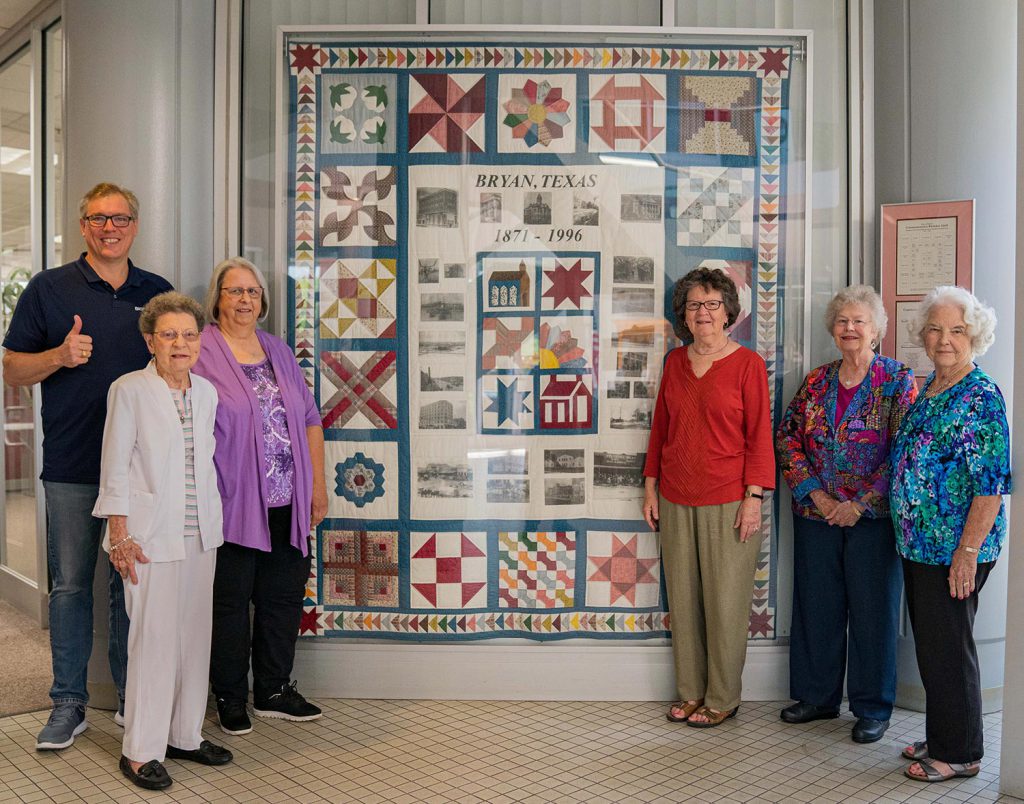
Members of the Brazos Bluebonnet Quilt Guild pose with Mayor Andrew Nelson and the 125th anniversary quilt in May 2021.
1996: The City of Bryan celebrates its 125th anniversary and a commemorative quilt is made by members of the Brazos Bluebonnet Quilt Guild. The quilt hangs today in the lobby of the Bryan Municipal Office Building.
As the decade rolled along, new and exciting development projects came to fruition in Bryan, one of the most important of which was Blinn College’s new Bryan campus on Villa Maria Road near E. 29th Street. This addition to the local educational landscape was a huge benefit to Bryan and its young people. Now, in addition to the four-year programs offered at Texas A&M, a student could go to Blinn for two years, get an associates degree and then consider transferring to a four-year program at another university.
Over the past two decades, Blinn’s footprint in Bryan has continued to expand adding new programs including vocational training programs. With more than 10,000 students at the Bryan campus, Blinn is one of the largest junior/community colleges in Texas and consistently has the highest transfer rate in the state. The school also has the highest percentage of students who go on to earn bachelor’s degrees, and it transfers more students to Texas A&M University than any other community college.
And while these new development projects were happening throughout Bryan, the restoration of Downtown Bryan had finally begun in earnest. Two buildings led the way: The Carnegie History Center and the LaSalle Hotel.
The Carnegie renovations had entered the planning stage as early as 1993, and on June 10, 1999 the historic library building was officially rededicated and reopened its doors to the public. About a year later, the LaSalle Hotel followed suit, having been restored and revamped into a luxury boutique hotel. The LaSalle was also added to the National Register of Historic Places. Today the hotel has 55 rooms and suites, as well as the Downtown Elixir Company on its ground-floor, and the secretive 5 Knocks Speakeasy in the basement.
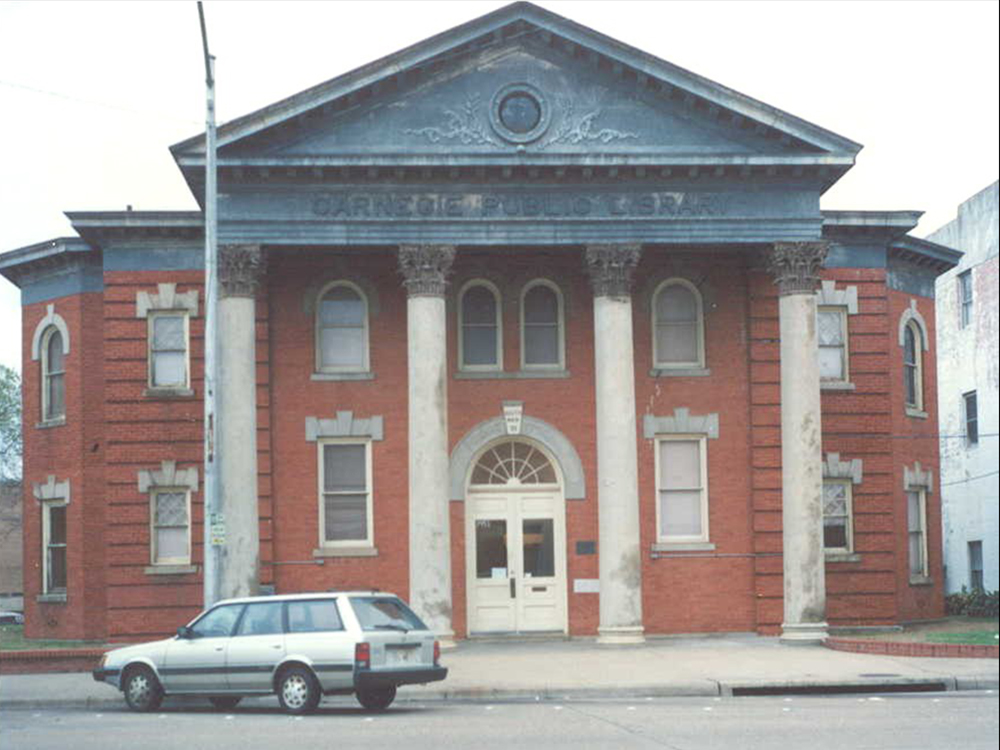
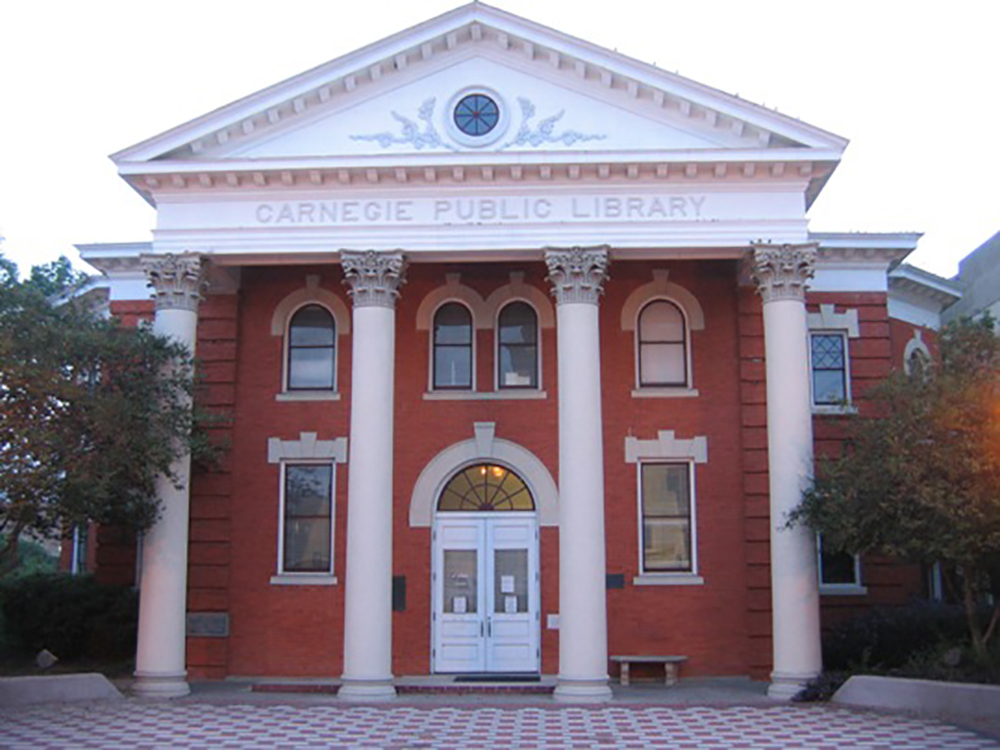
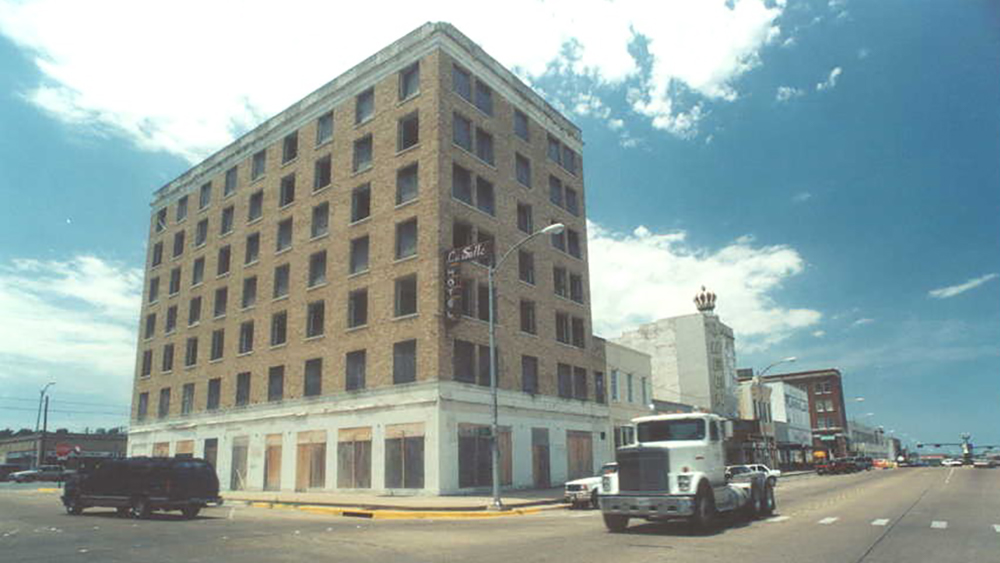

Kicking off a renaissance: The Carnegie History Center and the LaSalle Hotel were the first truly restorative projects of the Downtown Bryan revitalization era.
1999: The City of Bryan enters into an economic development agreement with Melrose Community Properties, LP, for the development of the Traditions Golf Course and master-planned community.
As the decade, and the millennium, came to a close things were looking up in Bryan. Oh sure, people were worried about Y2K and what the future held, but overall it seemed like the city had turned a corner. But the 1990s had one last gut check in store for this community and the entire Texas A&M family.
In the early morning hours of Nov. 18, 1999, just a week before the annual Texas A&M vs. University of Texas football game, one of the most tragic events in the history of Texas A&M occurred. The traditional Fightin’ Texas Aggie Bonfire collapsed during its construction, killing 12 people and injuring 27 others.
City of Bryan emergency responders rushed to the scene and banded together with first responders from throughout the community to assist in the rescue efforts. The scene was like something out of a nightmare.
Words can’t describe the magnitude of this event and so, as we close the 1990s, we leave you with this memorial video created by Texas A&M University in 2009 to mark the 10-year anniversary of the Bonfire tragedy.
Credit: Texas A&M University
2000s: Expansion
and transformation
2001: The City of Bryan donates the old Bryan City Hall and police department building at 201 E. 27th Street to the Children’s Museum of the Brazos Valley.
It’s the dawn of another new century in Bryan. There are some interesting parallels to be drawn between the turn of the century in 1900 and the turn of the century in 2000. Just as 100 years before, daily life in 1999 wouldn’t have been that much different than life in 2001. But again, just as in the early 1900s, changes were coming, huge technological changes that would truly transform society.
For Downtown Bryan, it was the era of restoration. Spurred on by the renovated LaSalle Hotel, and Carnegie History Center of Brazos Valley History, many other buildings began to get the restorations that they deserved.
Sept. 11, 2001: The world watches in horror as terrorists fly planes into the World Trade Center and Pentagon, and crash a plane in Shanksville, Pa. America is changed forever.
Going all-in: Listen to former Bryan Mayor Ernie Wentrcek as he describes the the passion and determination that members of the Bryan City Council showed for the restoration of Downtown Bryan and how that made Bryan unique among other cities during at time.
2000s: Bryan’s Hispanic culture flourishes as it exceeds 35% of the city’s population.
2000s: Bryan sees a significant increase in new retail development and many infrastructure improvements are made.
2002: The Queen Theatre is sold to Queen Theatre, L.P. The once donated building increases in price with each sale due to revitalization of the downtown streets and many buildings.
One key to downtown’s revival was taking time to plan.
In 2001, an award-winning Downtown Master Plan commissioned by the City of Bryan was unveiled. Prepared by Looney Ricks Kiss of Nashville, Tenn., this roadmap included suggestions in the areas of land-use regulation, new sidewalks, medians and landscaping, preservation and reuse of historic buildings, parking and transit initiatives and other opportunities to make Bryan more attractive, both visually and commercially.
The plan required steady, phased public investment for success and once again the city provided. Grant programs like the Downtown Improvements Program offered incentives for owners and developers to restore the façades of the downtown buildings, and this in turn, led to rising property values and increased interest in opening businesses, restaurants, bars and other commercial sites in downtown.
2004: The Traditions Club opens. The golf course is designed by Jack Nicklaus and Jack Nicklaus II. The course is home to the Texas A&M men’s and women’s golf teams.
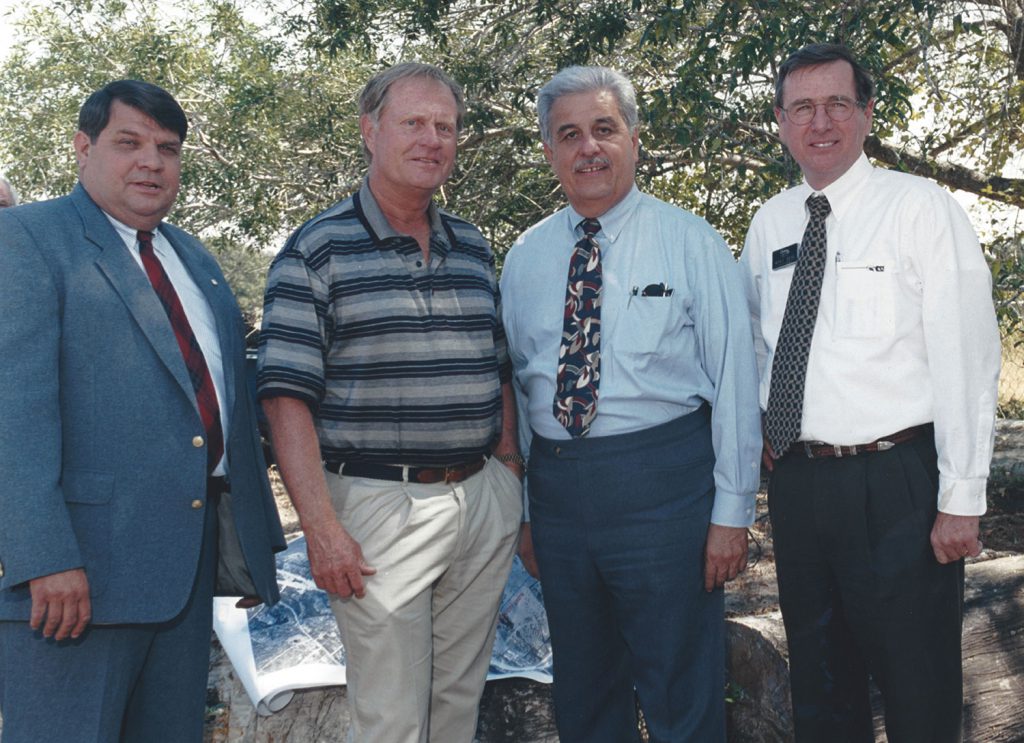
Bryan Mayor Lonnie Stabler, Jack Nicklaus, Greg Rodriguez and Mike Beal touring the Traditions site in the late 1990s.
In short, the city adapted the “if you build it, they will come” philosophy into an “if you fix it, they will come back” approach. And it worked. Today, Downtown Bryan is the cultural heart of the Brazos Valley and the soul of Aggieland. With its mix of historic charm, bars and restaurants, art galleries and entertainment options, downtown has once again reclaimed its role as the go-to business and entertainment district in the Brazos Valley.
2005: First Friday is started by local artist and downtown business owner Greta Watkins as a way to draw customers The Frame Gallery. The event spreads to other businesses, and by 2013 it has become so big that the Downtown Bryan Association is asked to help organize it each month.
2000s: Before and after, again
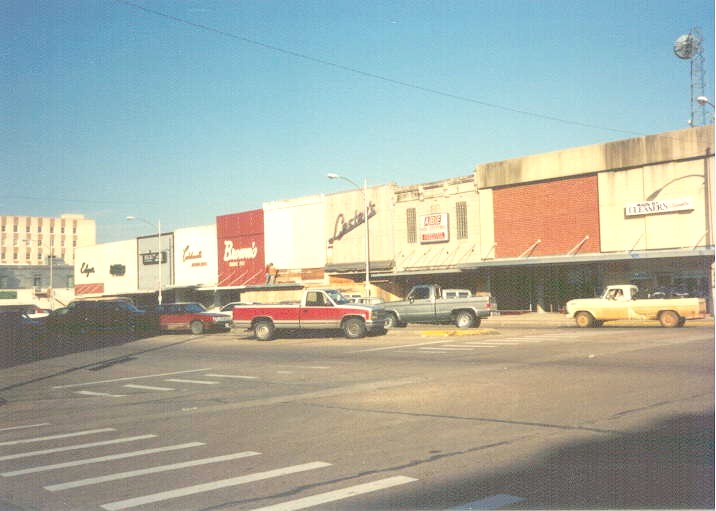


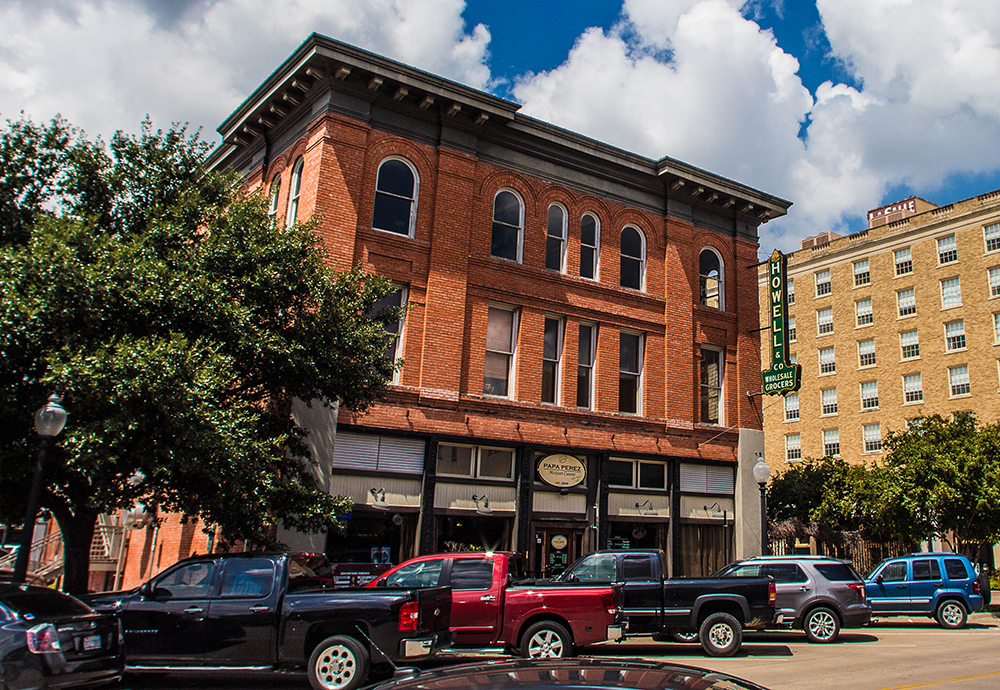
A picture is worth 1000 words: These photos of downtown from before and after the restorations speak for themselves.
Ties with Texas A&M continue to strengthen
2006: The Brazos Valley African American Museum opens on the site of the former Washington Elementary School. Several years in the making, it is the first facility of its kind to promote the history of African American citizens in the Brazos Valley.
2007: Bryan creates the Texas Reds Steak & Grape Festival as a mechanism for encouraging tourism, music, the arts and food in the community.
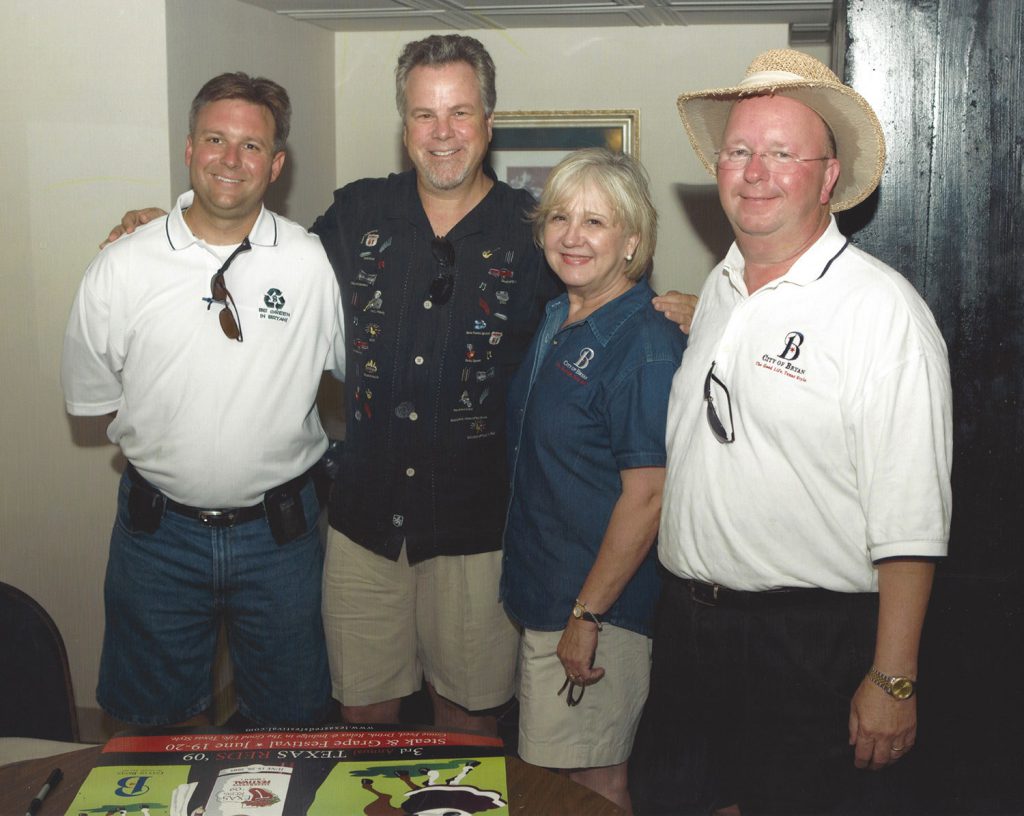
Texas Reds 2009: Council members Jason Bienski, Ann Horton and Mayor Mark Conlee pose with headline act Robert Earl Keen.
In the mid-2000s, Bryan was presented with an opportunity to strengthen its ties to the university, and for the university to expand its physical footprint in Bryan. The Texas A&M Health Science Center was expanding rapidly and the City of Bryan offered them a deal, specifically 200 acres of land in west Bryan where they could build a new facility, and further economic incentives.
This new Health Science Center (HSC) would serve many goals, but primarily it would bring all of the A&M Health academic programs and administration scattered across Bryan and College Station into one campus. And it would help spur growth on the western side of Bryan. In fact, 50 acres of the site were earmarked to be developed as public-private partnerships and taxable developments. Considering that the Traditions Club golf course and residential community were right next door to the site of the new HSC, the plan made a lot of sense.
The deal was a win-win for both Bryan and A&M, and in 2007 the city formally gifted the 200 acres to the university. Ground was broken in 2008 and the formal dedication ceremony for the new facility was held in July 2010.
2008: The City of Bryan is awarded the Texas A&M Health Science Center Presidential Award of Excellence for Institutional Enhancement.
2008: Rudder High School opens to relieve overcrowding at Bryan High. The school is named in honor of World War II hero, and former president of Texas A&M, James Earl Rudder.
2009: Traditions Acquisition Partnership, L.P. is formed to acquire the Traditions Club and related real estate assets in Bryan and College Station. The four officers of the company are all graduates of Texas A&M and maintain strong ties to the school through their involvement in various organizations that support the university.
The establishment of the HSC in west Bryan was a catalyst for new innovation and development in that area. Sometimes called the “bio-corridor,” the area encompassing the HSC and Traditions has become the home of multiple technology and science-oriented businesses. More recently, the establishment of The Stella Hotel and the Lake Walk Town Center in the area have created a thriving mixed-use recreational, living and entertainment district.
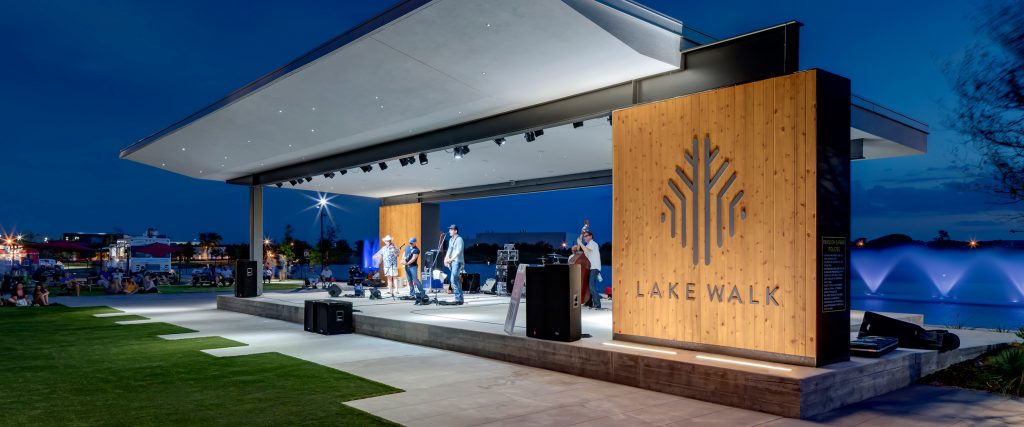
Lake lifestyle: The Lake Walk Town Center which includes residential, commercial and recreational venues often features outdoor music, theater and other performances.
The Queen without her crown…temporarily
In 2010, The Queen Theatre was sold to the Downtown Bryan Association for $185,000. The $75,000 down payment was raised by donations, most of which were less than $1,000 each. Many donations were simply the price of a “Save the Queen” t-shirt.
And so, after spending years watching other buildings in Downtown Bryan be revived to their former splendor, The Queen’s time had finally arrived. The overall restoration project was spearheaded by former Bryan City Council member Ben Hardeman, and on Nov. 21, 2010, 71 years to the day from her original grand opening in 1939, The Queen’s crown was removed and the revival began. Local historian Henry Mayo describes the work in his history of The Queen:
2013: Concerned Bryan citizens band together to save the endangered Temple Freda building. For preservation, Temple Freda is under interim ownership of the City of Bryan as custodian. The restoration project works under the “Friends of Temple Freda” committee comprised of a group of interested citizens.
The façade was re-plastered and painted, the enamel marquee was cleaned and fitted with new neon lighting, the front doors and ticket window were replaced, the two Q-U-E-E-N sets of letters were restored with new neon tubing, and the crown was repainted and had its neon lighting replaced and motor restored. The inside of the theater was cleaned out, including the removal of the 71-year-old Carrier air conditioning equipment. A substantial amount of new electrical wiring was also done, especially for all of the façade lights.
– The Queen Theater: Bryan, Brazos County, Texas, pages 8, 9.
On Oct. 7, 2011, crowds gathered for an official unveiling as the neon lights of the crown, façade and marquee were turned on again. It was definitely a moment to celebrate.
Feb. 15, 2013: Tragedy strikes the City of Bryan as a fire at the Knights of Columbus Hall claims the lives of two Bryan firefighters and injures two more. Lt. Greg Pickard and Lt. Eric Wallace lost their lives, and firefighters Ricky Mantey and Mitch Moran sustained serious burns and injuries requiring multiple surgeries. This was the first time the Bryan Fire Department had experienced a firefighter line-of-duty death since Aug. 23, 1978.
But all of that work had just been to fix up the outside and clear out the debris from the inside. It would take several more years, lots of hard work and many more donations for the interior renovations to be completed.
The Downtown Bryan Association raised funds in numerous ways, but perhaps the most impactful was the selling of commemorative custom bricks for the sidewalk outside the queen. These bricks now contain names or dedications that help the community realize how many people helped make The Queen’s restoration possible.
Finally, on May 4, 2018, The Queen reopened her doors to the public for the first time in more than 40 years. This post promoting the ribbon-cutting event from the City of Bryan’s official Facebook account says it all: “Every city has its celebrities. We have a Queen! Welcome back, Your Majesty!”
2013: Following the creation of the Irma Lerma Rangel College of Pharmacy in 2006 and a College of Nursing in 2008, the Texas A&M University Health Science Center transitions into an academic unit of Texas A&M while still maintaining its state agency status.
2014: Downtown Bryan is named a Texas Cultural District.
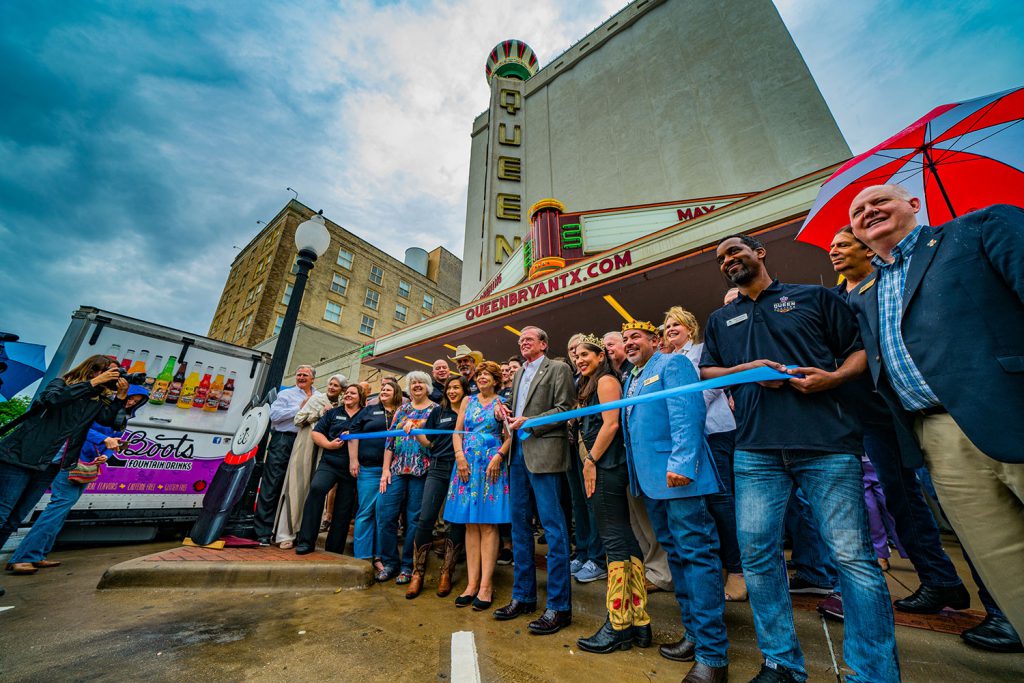
Welcome back, Your Majesty: On May 4, 2018, The Queen Theatre reopened its doors to the public for the first time since the 1970s. The restoration had taken a long time but Ben Hardeman, shown cutting the ribbon above, the Downtown Bryan Association and the City of Bryan had succeeded where others had failed. The Queen had been brought back to life.
Respect, excellence, leadership, loyalty, integrity, and
selfless service
In 2016 the Texas A&M University System’s RELLIS Campus was founded on the site of the Riverside Campus and the former Bryan Air Force Base. But this was more than just a name change. This was a game change.
The RELLIS Campus, whose name is an acronym for Texas A&M’s core values, is now a technology and testing research hub that facilitates collaboration between private and public-sector companies and provides unique educational opportunities for students. It serves as an ecosystem that fosters cutting-edge research, technology development, higher education and workforce training with state-of-the-art research laboratories, and testing and proving grounds.
December 2017 – January 2018: Wallace Phillips donates the 107-acre Phillips Event Center Golf Course to the City of Bryan. The city renames the course the City Course at the Phillips Event Center and closes the 117-acre Travis B. Bryan Municipal Golf Course.
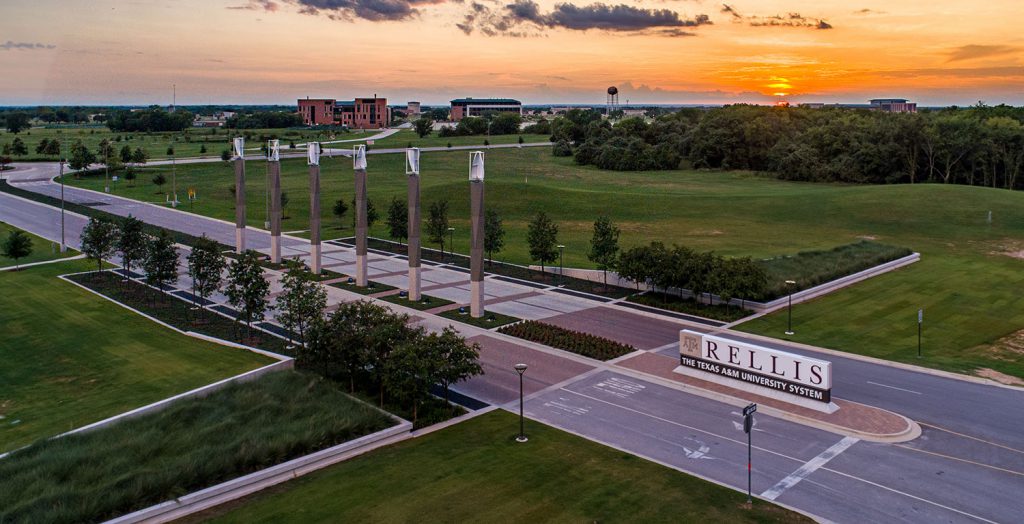
Forging the future: The United States Army’s Futures Command will soon be using the Bush Combat Development Complex at RELLIS as its central hub where the newest and most innovative ideas for modernizing the Army are tested and evaluated.
At the RELLIS Campus, post-secondary degree education and training are offered with programs through Blinn College, multiple universities within the Texas A&M System and the Texas A&M Engineering Extension Service (TEEX). Texas A&M began offering courses on the campus in 2018.
So yeah, that all sounds pretty cool. But it gets better because there’s more tech growth coming to RELLIS. And that’s good news for Bryan. The soon-to-be-completed Bush Combat Development Complex for the U.S. Army Futures Command, a 225,000 square foot Data and Research Center, and the growing demand for advanced research will secure RELLIS and Bryan as a hub for technical development well into the future.
November 2018: The City of Bryan and Texas A&M enter an agreement for the university to lease property in Downtown Bryan for the College of Architecture’s departments of Visualization and Landscape Architecture & Urban Planning.
As Downtown thrives, revitalization efforts shift to Midtown
In 2017, work began on the Midtown Area Plan, a framework document that would recommend broad strategies and would guide development and redevelopment in the area of Bryan known as Midtown. This document would serve in much the same capacity as the Downtown Master Plan had in 2001 for the revitalization of Downtown Bryan.
Midtown is a corridor area located between Texas and Finfeather avenues, and stretches from just south of Downtown Bryan all the way to the southern city limits and the Northgate area of College Station. That’s a lot of real estate to cover, so the the plan divides the area into five “experience districts” and calls for coordinated public and private investment in these five areas to serve as catalysts for redevelopment and revitalization.
Basically, instead of trying to paint the whole area with one type of brush, these five zones make it easier to tailor development in a specific area, while still working as a part of the overarching plan for Midtown.
After an extensive fact-finding and public-input campaign, and after going through many revisions and updates, the Bryan City Council approved the Midtown Area Plan on May 12, 2020. And one of the first public-private investments in the area is the redevelopment of the old Bryan Municipal Golf Course location into the Travis Bryan Midtown Park.
2019: The City of Bryan annexes the area around and including Texas Triangle Park in northwestern Brazos County, as well as the area around and including the Texas A&M University System’s RELLIS Campus.
2020: Destination Bryan is established to be the city’s official destination marketing organization to promote tourism and events in Bryan.
The new Travis Bryan Midtown Park is one of the largest projects ever undertaken by the City of Bryan and it will be a world-class recreation destination once completed. The park will feature outdoor athletic fields, the Legends Event Center indoor recreation facility, nature-based recreation opportunities and the BigShots Golf Aggieland entertainment complex.
Construction began in 2020, and once it is finished, the park and its facilities will be a new jewel in Aggieland and will help attract investment and development to the entire Midtown corridor.
Epilogue: The road goes on forever, and the story never ends
So, here we are. We’ve finally made it to 2021. On Nov. 29, 2021 Bryan will officially be 150 years old, according to the articles of incorporation. It’s been some ride, hasn’t it?
The railroad, A&M and cotton. The fires, the floods and wars. Injustices and celebrations, oppression and freedom. Successes and tragedies, decline and revival. Bryan’s seen it all in the last 150 years. How in the world did we make it this far? Well, we made it this far because in Bryan, we stand together when times are good and we stand together closer when times are bad.
Even today, as our community, our country and the entire world battles a global pandemic the likes of which has not been seen in more than 100 years, Bryan residents stand together. We may be six-feet apart, but we’re still standing together.
In the grand scheme of things, 150 years isn’t really that long. But look how far Bryan has come in that time. And just think about where Bryan can go, and what our residents can accomplish in another 150 years. We can’t know what the future holds, but we can be certain that the people of Bryan will be ready to face whatever comes their way.
Robert Earl Keen has written many great lyrics over the years, and you might have noticed a slight modification to one of them in the title of this epilogue. But it just seemed to make sense as we close the book on Bryan’s first 150 years and look ahead to the unknown.
The road goes on forever, and Bryan’s story never ends.

